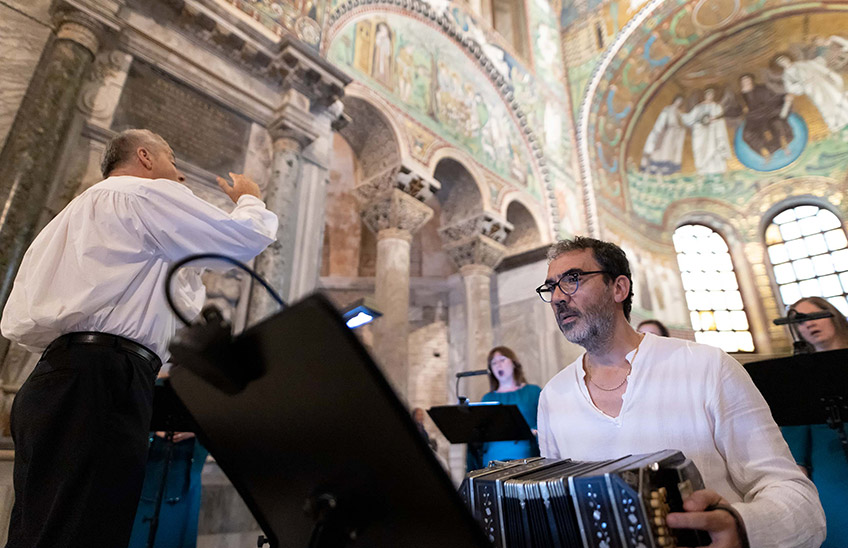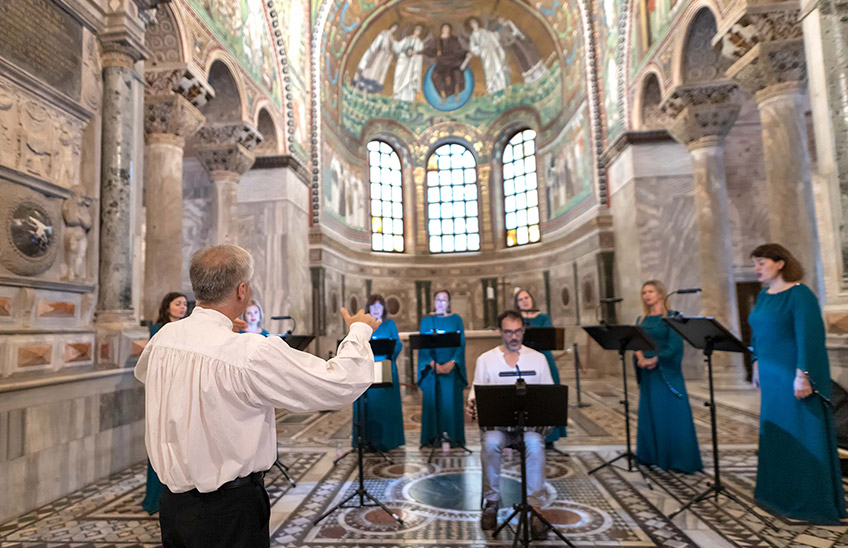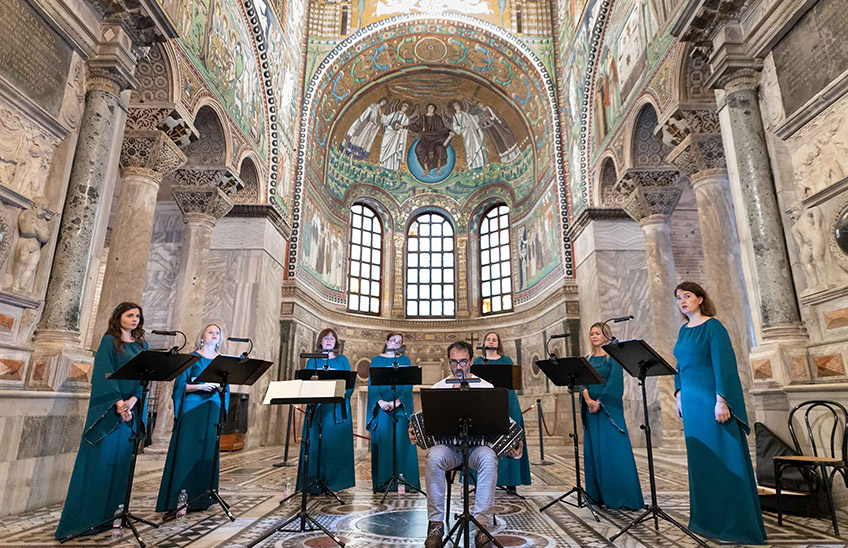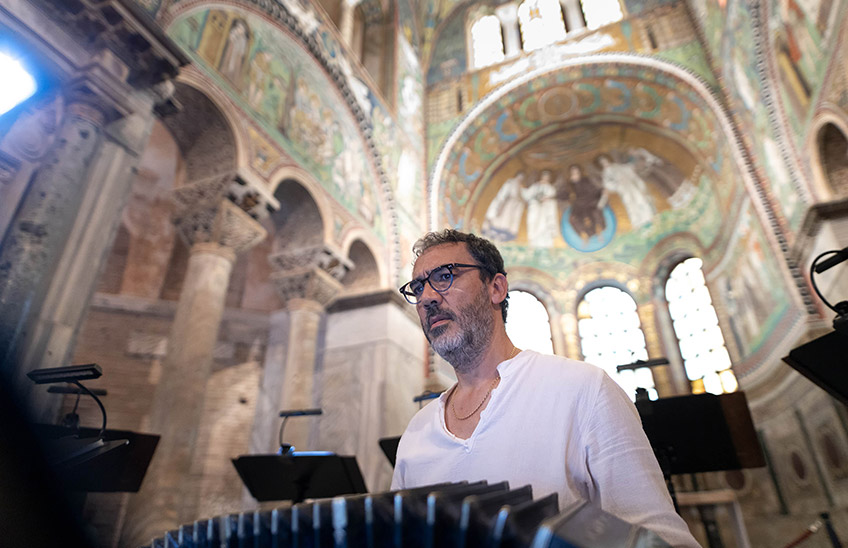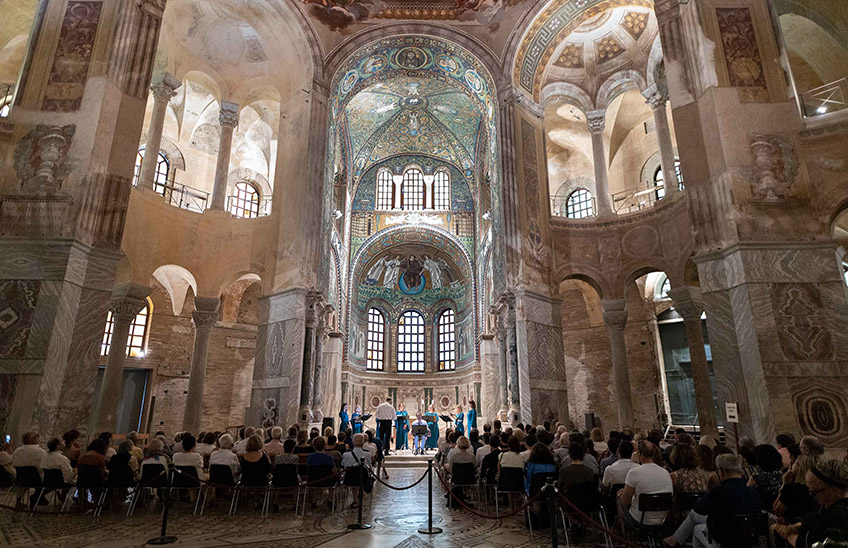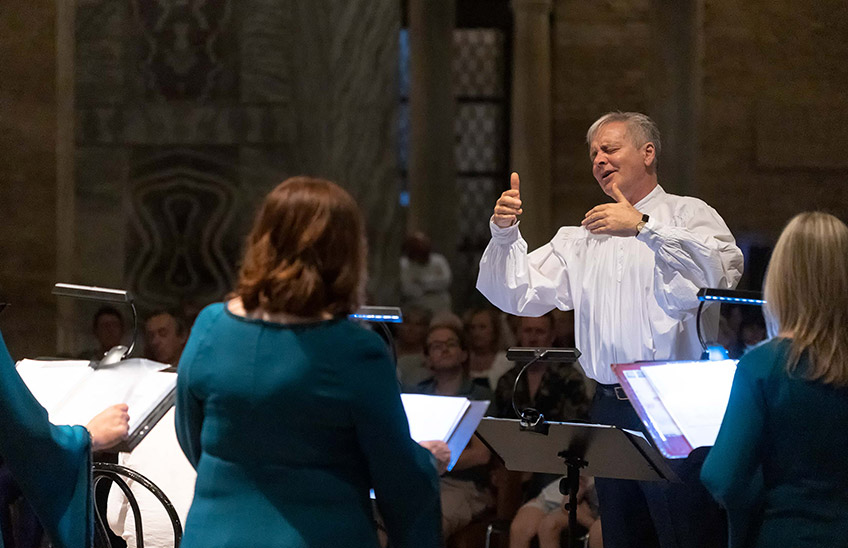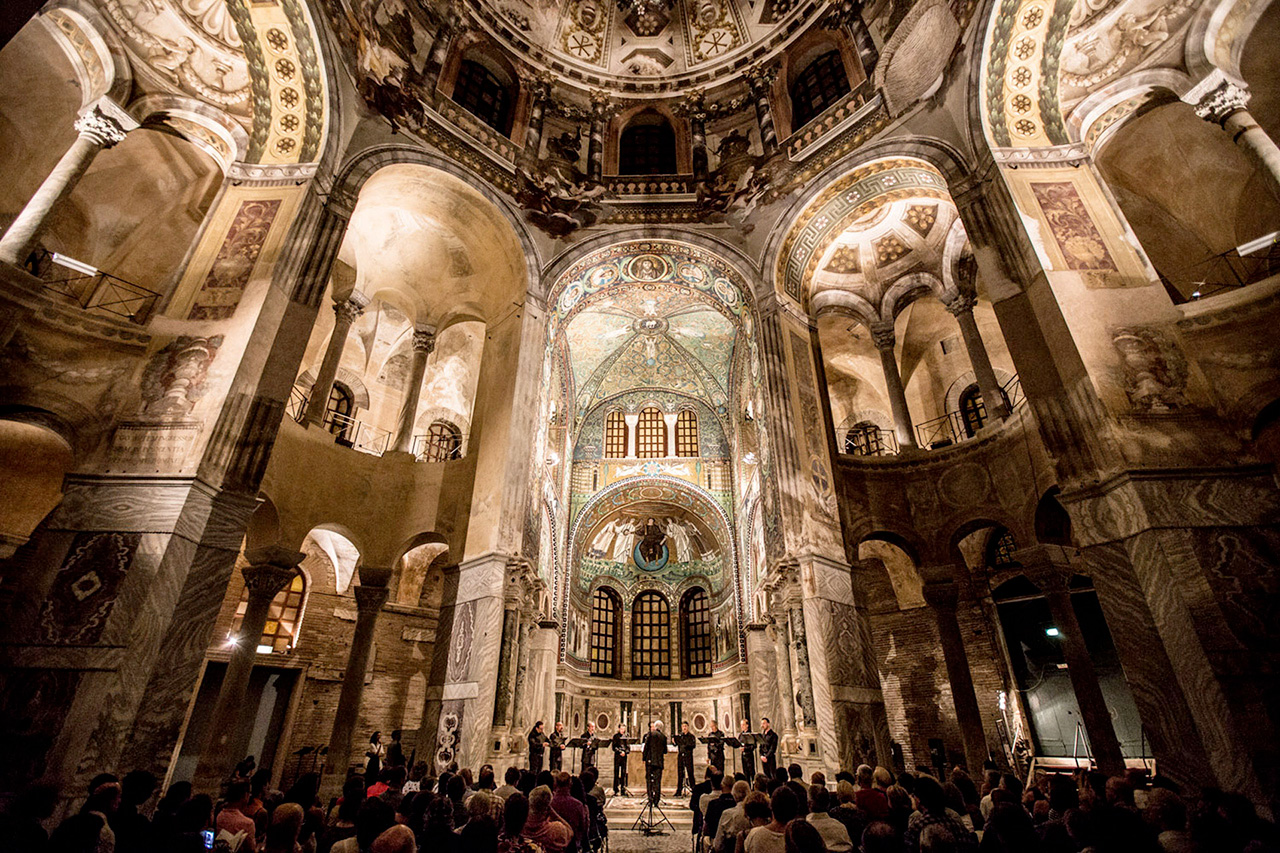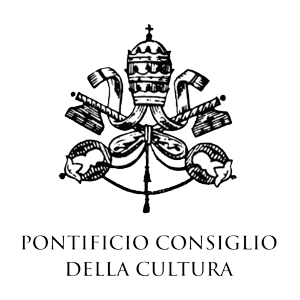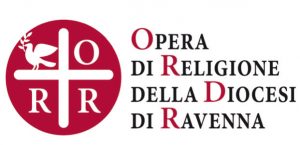© Luca Concas
Vespers at San Vitale
Cantar Francesco
The sacred in the popular, from the parchment to the heart
Daniele Di Bonaventura bandoneon
Gruppo Vocale Armonioso Incanto
conducotr Franco Radicchia
Programme
Padre Giuliano da Spira (first half of the 13th century)
from the Ufficio Ritmico di San Francesco d’Assisi (1230)
ad II Vesperas
I antifona Sanctus Franciscus praeviis
II antifona Hic praedicando circuit
III antifona Tres Ordines hic ordinat
IV antifona Doctus doctrice gratia
V antifona Laudans laudare monuit
Antiphon for the Transit of Saint Francis O santissima anima
Hymnus Plaude turba paupercula
from the Laudario di Cortona (13th century)
Chi vole lo mondo despresare
Laudar vollio per amore
Sia laudato San Francesco
Salutiam divotamente
Sections of the Divine Office that are written in verses, whose first examples have been traced to the 10th century, are called “rhythmic”. Perhaps the first known author is Fra’ Giuliano da Spira, about whom there is very little information. Born in the city of Speyer, in Germany, he spent a long time at the Royal Court in Paris, and joined the Order before 1227. He died in an odour of sanctity in ca. 1250. The Divine Office was commissioned to him by the Order perhaps in 1231-1232. The text is in lapidary, sententious medieval ecclesiastical Latin, but it is smooth and easy to understand. The antiphons of the Major Hours, Vespers and Lauds relate episodes and situations of the Saint’s life.
Pieces of the rhythmic Divine Office are accompanied by those from the famous Laudario di Cortona, and all the ancient melodies are counterpointed with mellow sound and elegance by Daniele Di Bonaventura’s bandoneon.
